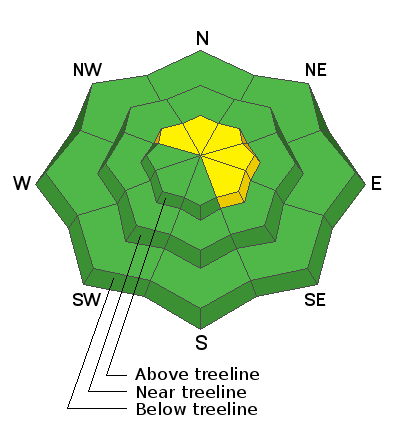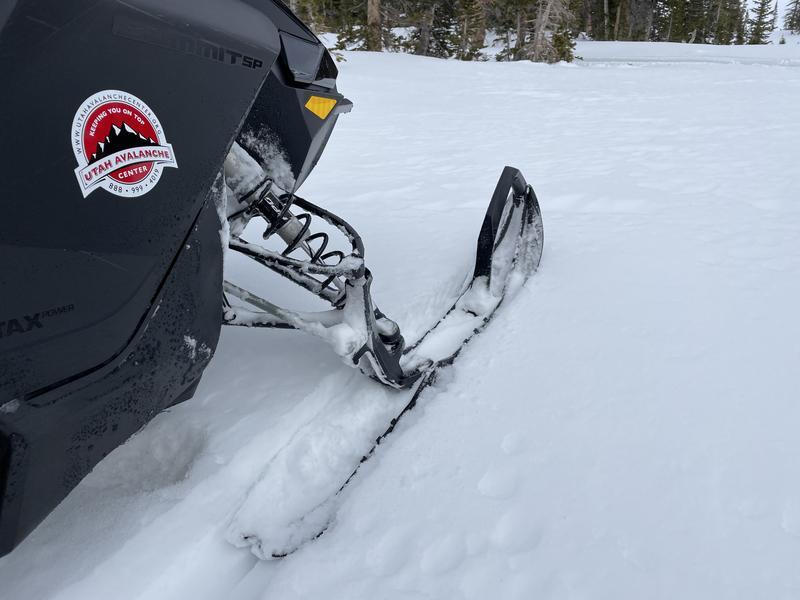Summary/history of the problem-
- Snow fell in October & early November
- Dry weather from early November to early December weakened and faceted that snow which became our problem child, the "persistent weak layer" or PWL.
- Early season snow melted off on south facing slopes
- Heavy snowfall in December buried the weak layer (PWL) and caused avalanches on it
Current state of the snowpack-
Sure, all the ingredients for an avalanche exist. We've got a weak layer near the ground with a very dense, hard slab of snow, now 3'-5' in thickness, resting on top of it. So... why aren't we seeing avalanches? What's missing is new additional weight and stress from recent snowfall, water weight, or strong winds. The last storm rolled through 7 days ago, and the last reported avalanche was 9 days ago.
The good news-
The weak snow has gained A LOT of strength and it's hard to impact this sugary layer, now buried very deeply. Triggering a slide on slopes with a deep, strong, uniform snowpack is unlikely.
What to watch out for-
The shaky foundation remains most suspect and easiest to impact in upper elevation, rocky, alpine terrain above treeline. In other words... where the pack is thin and weak, maybe around a bush or a rock we can't see ,barely covered over with snow. In terrain with these characteristics you can get an unwelcome surprise and still trigger an avalanche.
Master observer and snowpit profile artist JG, was recently in
upper Weber Canyon and found similar conditions... a deep, strong snowpack that is giving us more confidence to start stepping out into steeper terrain and tagging bigger objectives.
*
ALSO of note - I too recently stomped around
in upper Weber Canyon, wanting to look at terrain that previously avalanched, because sometimes those slopes flush out and leave behind a shallow snowpack, becoming future problems or what we call repeater slopes. But here's the good news- most of the terrain that slid during December storms, immediately refilled with snow and they didn't have time to develop weak layers. For that reason, they have a slightly shallower snowpack, but the weak layer has become stronger on those slopes just like on ones that didn't slide.











